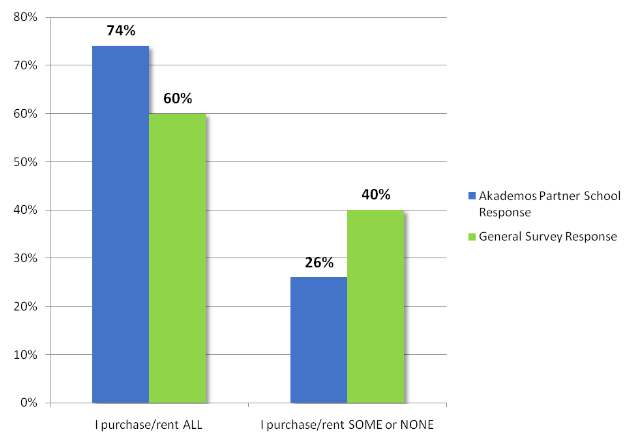The Future of the Textbook: Realizing the Promise of Data
 It seems like yesterday that Clayton Christensen, with colleagues Michael Horn and Curtis Johnson, published Disrupting Class, in which bold predictions of college closures equivalent to the dust bowls would occur by 2020 and mass customization would drive greater personalization and affordability in higher education. Many of these provocative claims have failed to fully be realized. And yet, if you were to ask most education technology thought leaders, the promise of digital courseware with machine learning powered by AI alongside big data analytic capabilities that help drive targeted engaging content is a promising solution to improve student outcomes in higher education. So why is higher education slower to adopt these promising solutions, especially with so many examples of technological transformation and disruption all around us?
It seems like yesterday that Clayton Christensen, with colleagues Michael Horn and Curtis Johnson, published Disrupting Class, in which bold predictions of college closures equivalent to the dust bowls would occur by 2020 and mass customization would drive greater personalization and affordability in higher education. Many of these provocative claims have failed to fully be realized. And yet, if you were to ask most education technology thought leaders, the promise of digital courseware with machine learning powered by AI alongside big data analytic capabilities that help drive targeted engaging content is a promising solution to improve student outcomes in higher education. So why is higher education slower to adopt these promising solutions, especially with so many examples of technological transformation and disruption all around us?
For one, education is messy and complex. The cost to faculty members to change what they use for their ‘book’ is high, particularly for faculty members who have been teaching the same course for years. In addition, many of these new options require teaching in a somewhat different way to take advantage of the toolsets that are required, which means faculty professional development. Finally, given the distributed ways in which these products are sold, awareness of what is available is a dynamic in the mix.
Regardless of the reason(s), let’s embrace the insightful leadership analogy of Rosabeth Moss Kanter in the well-regarded Zoom In, Zoom Out philosophy to decision making. If we Zoom In, we see a pandemic that has forced individual faculty members to move online at a rapid pace. In addition, the abrupt shift has forced administrators to deal with a myriad of small decisions to cope with the pandemic.
If we Zoom Out, the individual actions by thousands of administrators and faculty mean that universities have had the chance to experiment with both online learning and the efficacy of different pedagogical approaches. These real world experiments, forced upon the academy in short order are already providing administrators new insights as to how to create more effective learning environments.
With this as a backdrop, we would venture to predict future educational environments will support a more personalized, customized approach to learning that leverages data analytics generated from multiple sources that support early identification of students who may benefit from additional academic or student services outreach. One simple example is the usage of student data as it relates to their interactions with eBooks and digital courseware products.
For years, retention services companies such as Civitas, Starfish (now owned by Hobsons), Nuro and others have used data gleaned from the SIS, LMS and other sources to try to predict students who are at risk of failing. Yet it seems only logical that in the future, data surrounding usage of the eBook or courseware should be part of the analytical toolset. After all, if John or Jane Doe student isn’t reading the textbook, it’s a highly likely sign that they might be in trouble.
It’s notable that last week, Francisco Partners announced the acquisition of VitalSource, the largest eBook publisher in higher education (Disclosure: VitalSource is a partner of Akademos). While VitalSource is a growing and successful business on its own right, usage of the data of how students are engaging with the book can be very powerful in combination with other sets of data that retention services companies have at their disposal. We believe this fact was not lost upon Francisco, who has extensive EdTech experience and themselves own a significant portion of Civitas, one of the leading retention services companies.
Coming full circle, as higher education adopts eBooks and interactive courseware to a greater extent we submit that this will be another significant early data point to ascertain if a larger retention risk exists for any particular student. The data itself is not dispositive and as a result will need to be paired with some level of outreach, but if institutions can ingest and embrace this new data stream, it will improve their retention, improve their fiscal health and prove the so-called doomsayers from 20 years ago to be Cassandras.
Written by Raj Kaji, CEO Akademos and Dr. Andrew Shean, SVP/CAO National Education Partners and former ACAO Digital Fellow



